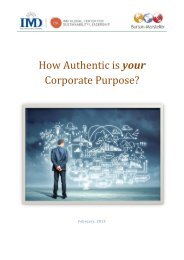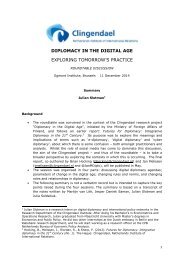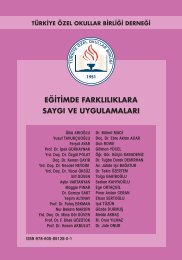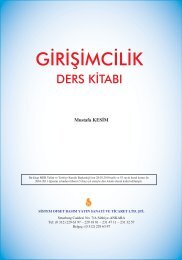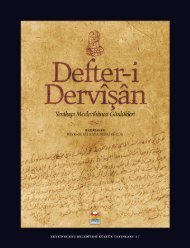SWEDEN%20policy%20profile%20-%20published%2005-02-2013
SWEDEN%20policy%20profile%20-%20published%2005-02-2013
SWEDEN%20policy%20profile%20-%20published%2005-02-2013
You also want an ePaper? Increase the reach of your titles
YUMPU automatically turns print PDFs into web optimized ePapers that Google loves.
50 - CHAPTER 3. WHAT ARE THE CHALLENGES AND STRATEGIES?<br />
learning areas for children’s experience, exploration and learning: 1) communication,<br />
language and text; 2) body, movement and health; 3) art, culture and creativity; 4) nature,<br />
environment and technology; 5) ethics, religion and philosophy; 6) local community and<br />
society; and 7) numbers, spaces and shapes. The framework plan strongly emphasises the<br />
importance of building conscience within children about the environment and nature and<br />
respect for natural environments. Observation and reflection skills in young children are<br />
regarded as important and are expected to be stimulated in early development.<br />
Each learning area covers a wide range of learning, and they are intertwined in play and<br />
activities. The staff groups are free to choose methods to foster children’s curiosity, creativity<br />
and thirst for knowledge. Additionally, municipalities have the responsibility to ensure that<br />
kindergartens for Sámi children are based on Sámi language and culture.<br />
Setting learning outcomes to support staff<br />
The Ministry of Education in Portugal is setting Learning Outcomes for preschool education<br />
(three-to-six-year-olds). Learning outcomes are acknowledged as the evidence of child<br />
performance, and they are defined in terms of child outcomes. They can be used as tools<br />
supporting teachers in their everyday work. The Framework Law of Preschool states the<br />
general objectives of preschool.<br />
Developing learning outcomes reflecting the holistic development of children, which should<br />
be encouraged rather than taught<br />
New Zealand’s Te Whāriki curriculum includes several dispositions, named learning<br />
outcomes, for each of its five strands: well-being, belonging, contributions of children,<br />
communication and exploration. These dispositions are encouraged rather than taught and,<br />
similar to the curricula in Nordic countries, reflect the holistic way children grow and learn:<br />
cognitive, social, cultural, physical, emotional and spiritual dimensions of human<br />
development are interwoven. The early childhood curriculum therefore takes up a model of<br />
learning that weaves together intricate patterns of linked experience and meaning rather<br />
than emphasising the acquisition of specific skills. The context around the child (the physical<br />
surroundings, the emotional context, relationships with others and the child’s immediate<br />
needs at any moment) will affect and modify how a particular experience contributes to the<br />
child’s development. This integrated view of learning sees the child as a person who wants<br />
to learn, sees the task as a meaningful whole, and sees the whole as greater than the sum<br />
of its individual tasks or experiences.<br />
Since Te Whāriki emphasises social relationships and personal well-being, outcomes are<br />
formulated in terms of relationships and well-being and are focused on the skills and abilities<br />
children should develop rather than in terms of actual attainment targets. For each strand,<br />
knowledge, skills and attitudes are described, and examples of experiences are given, which<br />
help to meet these outcomes. Examples of outcomes include: confidence and ability to<br />
express emotional needs, knowledge about how to keep themselves healthy, and a sense of<br />
responsibility for their own well-being and that of others. For staff, questions for reflection are<br />
included, which are aimed at guiding staff in stimulating children in their development and<br />
improve staff pedagogy and quality. Additionally, for each strand and goals, adults'<br />
responsibilities in management, organisation and practice are explained. Each of the strands<br />
or learning areas also lists specific links to schooling to stimulate continuity between early<br />
childhood education and primary school. This section indicates the skills or attributes<br />
children will likely need when moving from ECEC to school so as to ensure continuous<br />
development and lifelong learning, e.g., “be able to work co-operatively”, “have experience in<br />
making choices and decisions, setting their own goals, and using their initiative”, “understand<br />
basic concepts about rules, rights and fairness", “have established self-care skills”.<br />
QUALITY MATTERS IN EARLY CHILDHOOD EDUCATION AND CARE: SWEDEN © OECD <strong>2013</strong>



